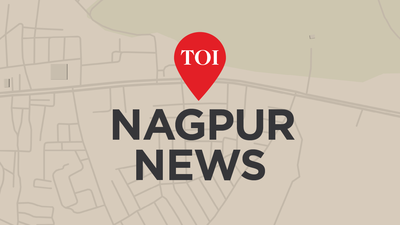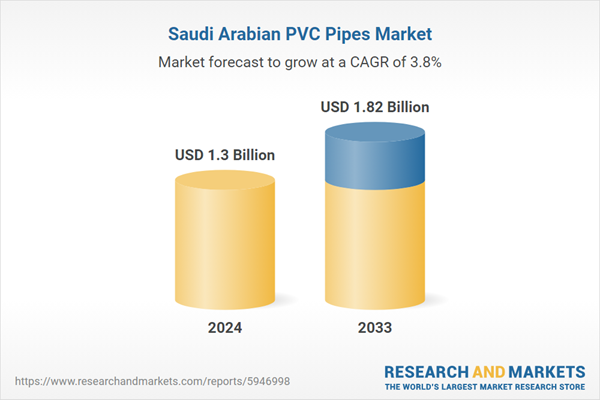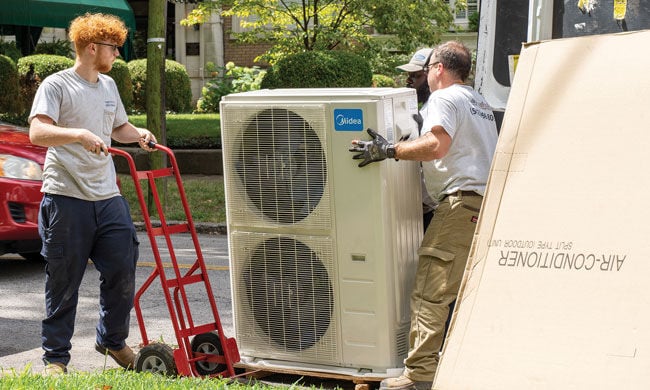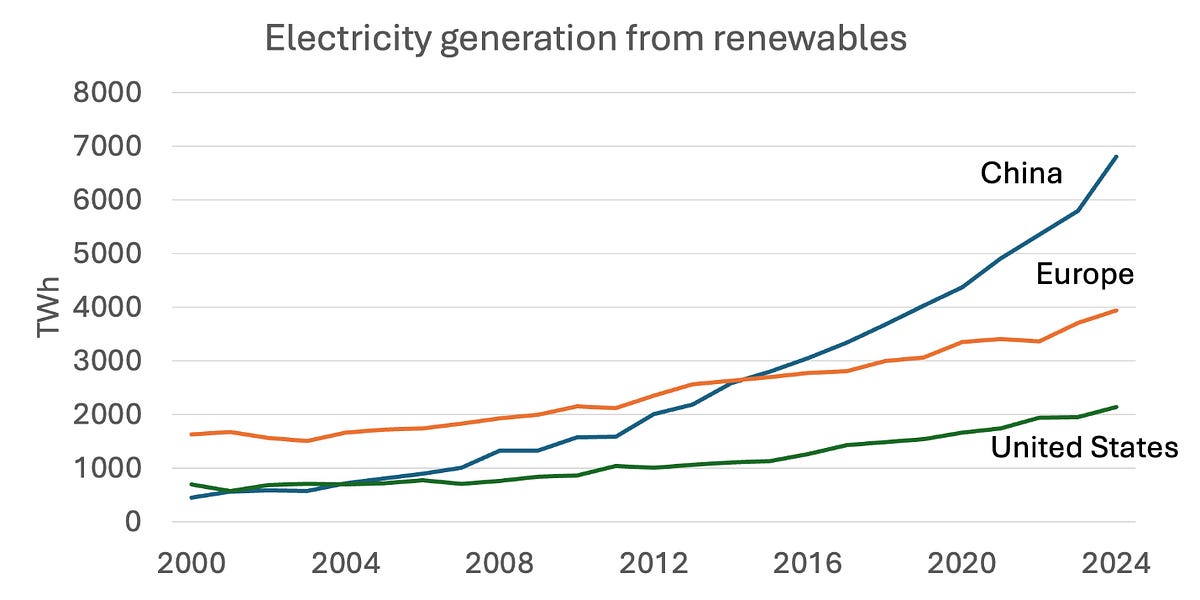Power Quality: The Invisible Foundation of Smart Grids – FinancialContent

Report on Power Quality as a Foundational Element for Smart Grids and Sustainable Development
Introduction: The Imperative of Power Quality for Global Sustainability
The global energy transition, driven by the need to achieve the United Nations Sustainable Development Goals (SDGs), is characterized by the rapid adoption of renewable energy, electrification of transport, and the development of smart grid technologies. While these innovations are at the forefront of energy discourse, their efficacy is fundamentally dependent on an often-overlooked parameter: power quality. This report examines the critical role of power quality—the stability and conformity of voltage, current, and frequency—as an indispensable foundation for building resilient, efficient, and sustainable energy systems aligned with key SDGs.
The Role of Power Quality in Achieving Sustainable Development Goals (SDGs)
High power quality is not merely a technical requirement but a critical enabler for several SDGs. Its stability directly impacts the reliability and sustainability of modern infrastructure and energy systems.
- SDG 7 (Affordable and Clean Energy): The integration of Distributed Energy Resources (DERs) like solar and wind is central to SDG 7. However, these sources introduce variability and harmonics that can destabilize the grid. Maintaining high power quality is essential to ensure a reliable and clean energy supply, maximizing the uptake of renewables without compromising grid integrity.
- SDG 9 (Industry, Innovation, and Infrastructure): Modern industries, data centers, and automated manufacturing facilities rely on sensitive electronic equipment that demands a stable power supply. Poor power quality leads to equipment malfunction, production downtime, and financial losses, thereby undermining the development of resilient infrastructure and hindering industrial innovation.
- SDG 11 (Sustainable Cities and Communities): The functionality of sustainable cities depends on reliable electricity for everything from public transport and healthcare to digital services. Power quality disturbances can cause system-wide failures, impacting urban resilience and the well-being of communities.
- SDG 13 (Climate Action): By enabling a more efficient grid and facilitating the large-scale integration of decarbonized energy sources, robust power quality management is a direct contributor to climate action. It reduces energy losses and supports the transition away from fossil fuels.
Common Power Quality Challenges and Their Impact on Sustainability Objectives
Deviations from standard power quality norms present significant barriers to achieving sustainability targets. The primary issues include:
-
Harmonics
Description: Distortions in the current and voltage waveforms, often generated by non-linear loads such as variable frequency drives and power electronics used in renewable energy inverters.
Impact: Leads to overheating of transformers and cables, energy losses, and malfunctioning of sensitive equipment, directly opposing the efficiency goals of SDG 7 and SDG 9.
-
Voltage Sags and Swells
Description: Short-term decreases (sags) or increases (swells) in voltage.
Impact: Can cause shutdowns in industrial processes, data loss in digital systems, and damage to electronic devices, affecting the reliability of infrastructure critical for SDG 9 and SDG 11.
-
Voltage Unbalance
Description: Asymmetrical voltage levels across the three phases of a power system.
Impact: Reduces the efficiency and lifespan of three-phase motors, a cornerstone of industrial operations, thereby increasing energy consumption and operational costs.
-
Frequency Deviations
Description: Fluctuations in the grid’s operating frequency, often caused by a mismatch between power generation and load.
Impact: Can lead to large-scale system instability and blackouts, jeopardizing the reliable energy access mandated by SDG 7.
Strategic Interventions for Enhanced Power Quality and SDG Attainment
A multi-faceted approach is required to mitigate power quality issues and ensure the grid can support sustainable development.
Mitigation and Management Strategies
- Online Monitoring and Analytics: Deploying real-time power quality analyzers across the grid, leveraging AI and big data to shift from reactive correction to predictive management. This supports the innovation aspect of SDG 9.
- Source-Side Compensation: Installing advanced solutions like Active Harmonic Filters (AHFs) and Static Var Generators (SVGs) at points of renewable energy interconnection to neutralize disturbances at their source.
- Load-Side Optimization: Promoting the use of equipment with low harmonic distortion and high power factor in industrial and commercial settings to reduce overall grid stress.
- Advanced Grid Planning: Utilizing simulation and modeling tools to forecast and design out potential power quality disturbances in future grid expansions, ensuring infrastructure is resilient and fit for purpose (SDG 9).
- Adherence to International Standards: Enforcing compliance with standards such as IEEE 519 and IEC 61000 to establish a universal benchmark for grid performance and equipment compatibility.
Conclusion: Power Quality as a Core Priority for a Sustainable Future
Power quality is the invisible yet essential architecture supporting the transition to a decentralized, digitized, and decarbonized energy system. As the world progresses towards achieving the Sustainable Development Goals, particularly those related to energy, infrastructure, and climate action, the stability and reliability of the electrical grid become paramount. Treating power quality as a core design and operational priority is non-negotiable for unlocking the full potential of smart grids and securing a sustainable and resilient energy future for all.
Analysis of Sustainable Development Goals in the Article
1. Which SDGs are addressed or connected to the issues highlighted in the article?
-
SDG 7: Affordable and Clean Energy
- The article’s core theme is improving power quality to support modern energy systems. This directly relates to SDG 7 by focusing on energy efficiency and enabling the integration of clean energy sources. It states that power quality is a “critical enabler” for a grid that is becoming more “decentralized, digitized, and decarbonized,” specifically mentioning the need to “support more renewable energy.”
-
SDG 9: Industry, Innovation, and Infrastructure
- The article discusses the development of resilient and reliable infrastructure, which is the essence of Target 9.1. The concept of a “smart grid” is an advanced form of infrastructure. The text highlights how poor power quality can lead to “system shutdowns” and “equipment malfunction,” undermining infrastructure reliability. It also emphasizes innovation through “AI, cloud computing, and big data analytics” for predictive power quality management.
-
SDG 11: Sustainable Cities and Communities
- Reliable power infrastructure is fundamental to sustainable cities. The article mentions the “Proliferation of Sensitive Loads: Data centers, medical equipment, and automated manufacturing,” which are critical components of modern urban environments. Ensuring stable power for these services contributes to making cities and human settlements safe, resilient, and sustainable.
-
SDG 12: Responsible Consumption and Production
- The article connects power quality to resource efficiency. Poor quality leads to “overheating, equipment damage,” and “reduced motor efficiency,” which represent inefficient use of energy and materials. By improving power quality, energy consumption is optimized, and the lifespan of equipment is extended, reducing electronic waste and promoting more sustainable production patterns.
-
SDG 13: Climate Action
- By enabling the large-scale integration of renewable energy sources like “Solar PV and wind,” improving power quality directly supports climate change mitigation efforts. A stable and efficient grid is necessary to transition away from fossil fuels and build a “decarbonized” energy system, which is a key strategy for climate action.
2. What specific targets under those SDGs can be identified based on the article’s content?
-
SDG 7: Affordable and Clean Energy
- Target 7.2: “By 2030, increase substantially the share of renewable energy in the global energy mix.” The article directly supports this by explaining that power quality management is essential to handle the “Integration of Distributed Energy Resources (DERs): Solar PV and wind,” which “introduce fluctuations and harmonics into the grid.”
- Target 7.3: “By 2030, double the global rate of improvement in energy efficiency.” The article highlights that poor power quality causes “reduced motor efficiency” and “overheating,” while good quality supports “higher system efficiency.”
- Target 7.a: “By 2030, enhance international cooperation to facilitate access to clean energy research and technology… and promote investment in energy infrastructure and clean energy technology.” The text discusses advanced technologies like “Active Harmonic Filters (AHFs),” “AI, cloud computing, and big data analytics,” and the need for “Grid Planning & Simulation,” all of which represent investments in clean energy technology and infrastructure.
-
SDG 9: Industry, Innovation, and Infrastructure
- Target 9.1: “Develop quality, reliable, sustainable and resilient infrastructure… to support economic development and human well-being.” The entire article is about ensuring the quality and reliability of power infrastructure (smart grids). It notes that failures lead to “system shutdowns” and “financial losses worth millions,” directly impacting economic development.
- Target 9.4: “By 2030, upgrade infrastructure and retrofit industries to make them sustainable, with increased resource-use efficiency…” The article advocates for upgrading grid infrastructure to handle new technologies and loads, thereby increasing “system efficiency” and making it more sustainable.
-
SDG 11: Sustainable Cities and Communities
- Target 11.b: “…adopting and implementing integrated policies and plans towards… resilience…” The development of a robust smart grid, underpinned by high power quality, is a plan towards building resilient urban infrastructure capable of supporting critical services like “data centers” and “medical equipment.”
3. Are there any indicators mentioned or implied in the article that can be used to measure progress towards the identified targets?
-
Technical Power Quality Indicators
- The article explicitly lists several technical deviations that can be measured to assess power quality. These serve as direct indicators of the grid’s health and its ability to support the SDGs. These include:
- Level of Harmonics (distorted current waveform)
- Incidence of Flicker (rapid voltage variations)
- Frequency and depth of Voltage Sags (short-term voltage drops)
- Degree of Unbalance (asymmetric voltage/current)
- Magnitude of Frequency Drift (unstable grid frequency)
- The article explicitly lists several technical deviations that can be measured to assess power quality. These serve as direct indicators of the grid’s health and its ability to support the SDGs. These include:
-
Performance and Impact Indicators
- Compliance with standards: The article mentions “Standards Compliance: Align with relevant standards such as IEC 61000, IEEE 519, and GB/T 12325.” The percentage of the grid compliant with these standards is a clear indicator of progress.
- System Efficiency: Mentioned as “higher system efficiency,” this can be measured as a reduction in transmission and distribution losses.
- Infrastructure Reliability: Progress can be measured by a reduction in the frequency of “equipment malfunction” and “system shutdowns.”
- Economic Impact: A reduction in “financial losses” attributed to poor power quality is a key indicator of improved infrastructure performance.
- Adoption of Technology: The rate of deployment of mitigation technologies like “Active Harmonic Filters (AHFs)” and “Static Var Generators (SVGs)” can be tracked.
- Integration of Renewables: The percentage of energy from “Solar PV and wind” that is successfully and reliably integrated into the grid serves as an indicator for Target 7.2.
4. Table of SDGs, Targets, and Indicators
| SDGs | Targets | Indicators |
|---|---|---|
| SDG 7: Affordable and Clean Energy |
7.2: Increase the share of renewable energy.
7.3: Improve energy efficiency. 7.a: Promote investment in clean energy technology and infrastructure. |
Percentage of renewable energy (Solar PV, wind) integrated into the grid.
Measurements of system efficiency; reduction in energy losses from overheating and motor inefficiency. Investment in and deployment of technologies like AHFs, SVGs, and AI-powered monitoring systems. |
| SDG 9: Industry, Innovation, and Infrastructure |
9.1: Develop quality, reliable, sustainable and resilient infrastructure.
9.4: Upgrade infrastructure for sustainability and increased resource-use efficiency. |
Reduction in frequency of system shutdowns and equipment malfunctions; reduction in financial losses from poor power quality.
Compliance with standards (IEC 61000, IEEE 519); measured levels of harmonics, voltage sags, and frequency drift. |
| SDG 11: Sustainable Cities and Communities | 11.b: Implement plans for resilience. | Power stability and reliability for critical urban services (data centers, medical equipment). |
| SDG 12: Responsible Consumption and Production | 12.2 / 12.5: Achieve efficient use of resources and reduce waste generation. | Reduction in equipment damage and failures, leading to less electronic/industrial waste. |
| SDG 13: Climate Action | 13.2: Integrate climate change measures into planning. | Successful grid modernization to support a “decarbonized” energy system. |
Source: markets.financialcontent.com

What is Your Reaction?
 Like
0
Like
0
 Dislike
0
Dislike
0
 Love
0
Love
0
 Funny
0
Funny
0
 Angry
0
Angry
0
 Sad
0
Sad
0
 Wow
0
Wow
0














































































